[ad_1]
Every coach hears these questions without fail: “What weight should I use?” or “How hard should this set be?“. Sometimes it’s because the athlete didn’t read their program but oftentimes it’s on us as coaches to provide sufficient clarity when it comes to prescribing the appropriate weight for the given set and rep parameters.
The purpose of this blog is to emphasize the importance of being proactive as a coach and having ready answers to those all too common questions. It not only allows for more teaching opportunities, but also ensures clarity and effective communication with athletes.
I have been in this industry as a coach and programmer for well over 20 years (as well as being an avid trainee myself for about 35 years). In that time period, I have consumed a great deal of training information. I have read hundreds upon hundreds of books and articles about training and I have experimented with more training programs than I can possibly count.
I have also written thousands of training programs for others as well. I tell you this not to impress you, but to impress upon you that I have quite a bit of experience in making the following observation:
I have come across countless training programs that unintentionally overlook a crucial aspect – a lack of clear communication regarding the appropriate weight selection for a given set/rep protocol. This observation applies to programs I have read, seen, reviewed, and personally written (please note that I am also speaking to the man in the mirror when I write this).
We can tend to assume that our clients or athletes are well-informed about their own load prescriptions because to us as coaches, it seems like an obvious thing to understand. But as coaches and programmers, it is our responsibility to bridge this gap and ensure effective communication in our training programs. Hand in hand with this, I also feel that it is critically important to communicate the intended progression plan as well, but that is a story for another day.

What is the best way to communicate this?
There are several methods that can be used to prescribe intensity or loading but first, let’s quickly define what we mean by “load” or intensity…
Intensity is most certainly one of the key programming variables and its’ meaning must be understood so that we are on the same page. It is it commonly defined in two primary ways:
#1. Intensity of Load:
Typically defined as a percentage of one repetition max(%1RM) or the most weight that one could lift for one repetition. It can also be expressed as specific RM load like 5RM for example. This is simply the “weight” one is using.
#2. Intensity of Effort:
Typically defined as how “hard” or difficult a set is relative to the number of repetitions being performed. I have personally grown fond of the term “intensiveness” to further differentiate between the two meanings. This is typically expressed or described in terms of an RPE (rating of perceived exertion) based upon RIR (repetitions in reserve). I will note that this can also be expressed as a percentage of a RM load (this is the %difficulty parameter in BridgeAthletic) and is also often called relative intensity.
Why does it matter so much?
The effectiveness of a training program hinges on utilizing the appropriate load and training with the desired proximity to failure. As the programmer, it is crucial that you do everything in your power to ensure that the program aligns with your intentions, allowing the trainee to achieve the desired results.
Before going further, I will note that there are advantages and disadvantages to all forms of load prescribing methods, but that’s not the purpose of this article. The purpose of this article is to remind you that whatever you do, just make sure you choose something rather than nothing at all.
Common Load Prescription Examples
Typically, you will mostly see load assigned in one of the following manners (to illustrate, I’ll give you a sneak peek as to what this would look like from the program builder view on a desktop on the BridgeAthletic platform):
1. Prescribing a percentage of 1RM (%1RM)
Example: 3 sets of 6 reps on the Barbell Front Squat at 70%1RM
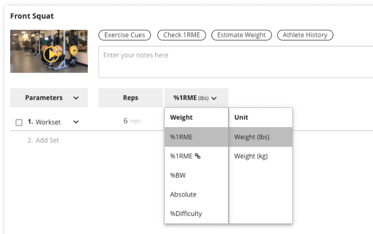
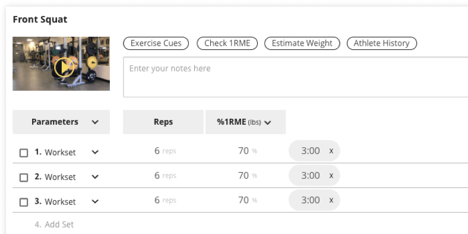
2. Prescribing a specific repetition maximum load
Example: 3 sets of 6 reps on the Barbell Front Squat using a 10-11 RM load
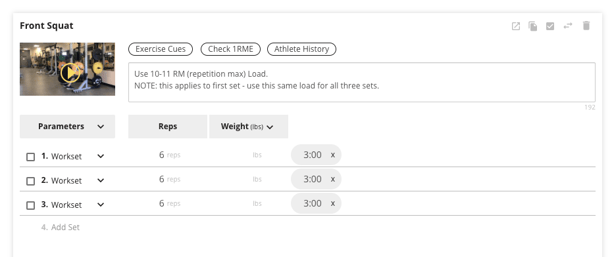
You will notice that in the above instance we utilized the amply space notes feature on the Bridge platform to write clear and complete notes to communicate proper load selection.
3. Prescribing RPE based upon RIR
Example: 3 sets of 6 reps on the Barbell Front Squat at an RPE of 6
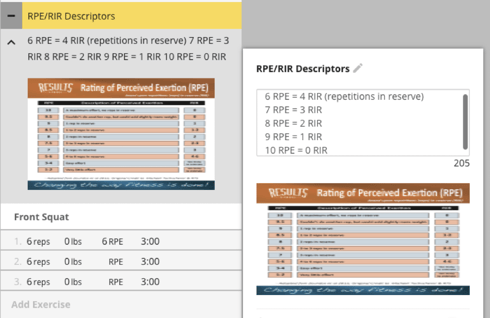
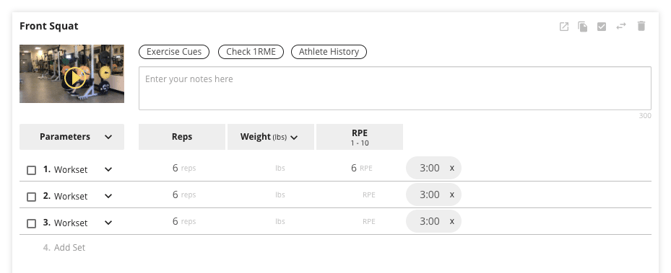
In this example we are able to select RPE as one of our parameters to guide load selection. I took it a step further and utilized the ability of the Bridge platform to add a PDF file with a chart that used in our gym to explain RPE based upon RIR. I also once again utilized the notes feature for the same clarity.
By the way, you may notice that in this example of performing 6 reps at 6RPE, this would basically be the same thing as assigning an 10RM load in the previous example above.
4. Prescribing nothing at all.
Example: Barbell Front Squat for 3 sets of 6 reps
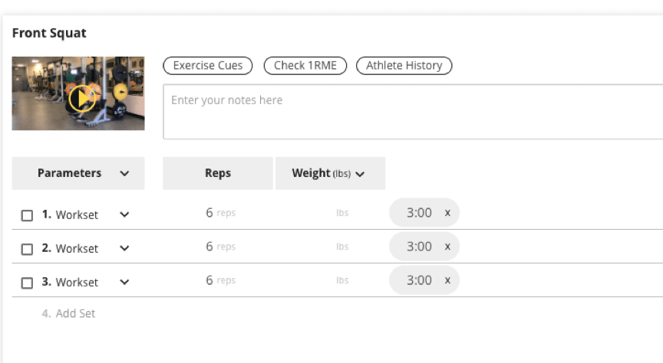
This is the one that I would suggest trying to eliminate or minimize. You can see that the athlete will immediately have at least 2-3 questions or they will have to make assumptions to these questions.
a. What weight should be used?
b. Should I use the same weight for all 3 sets?
c. How hard should it be?
Now, I will state that this is not big deal if you have clearly stated what is implied of what do to do in the case of these prescriptions (but I think it is a much better idea to write it out on the program and leverage the technology). I would suggest to always try to put yourself in your athletes’ shoes and ask yourself what questions they may have when reading a program.
It does take some time and forethought to plan this out in advance, but the time is worth it!
By the way, BridgeAthletic makes it easy and saves you a ton of time going forward since you can save some much of this in the form of template blocks or template sets.
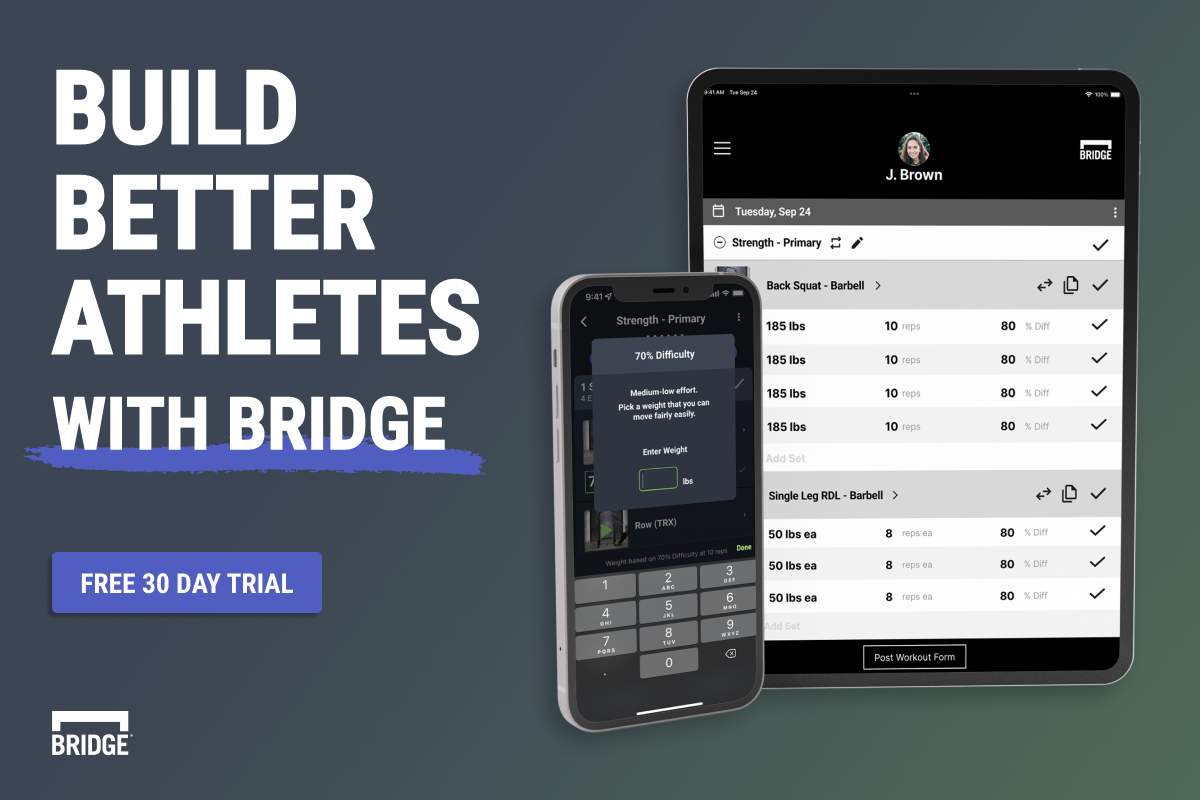
Click here to get Pull-up Resolution discounted price while it’s still available…
[ad_2]

